calsfoundation@cals.org
Arkansas State University System
The Arkansas State University System, which has its headquarters in Little Rock (Pulaski County), is a group of institutions of higher education operating in the state. The system comprises seven separate institutions, many with multiple campuses, including one in Mexico.
The system originated with the founding of the First District Agricultural School in Jonesboro (Craighead County) through the passage of Act 100 of 1909, which also authorized district agricultural schools at Magnolia (Columbia County), Monticello (Drew County), and Russellville (Pope County). What would later become Arkansas State University (ASU) in Jonesboro opened the next year and educated students from northeastern Arkansas. The school added junior college coursework during World War I to allow students to participate in the Student Army Training Corps. Renamed as the First District Agricultural and Mechanical College in 1925, the college added coursework to become a senior-level college and awarded its first four-year degrees in 1931. In 1933, it became Arkansas State College and experienced great growth after the end of World War II as former service members and others flocked to institutions of higher education across the country. The institution received its current name of Arkansas State University in 1967 when Governor Winthrop Rockefeller signed a bill making the change. The addition of doctoral programs in the 1990s along with a jump to NCAA Division I-A status saw the profile of the institution rise.
The ASU System dates to 1955 when the Junior Agricultural College of Central Arkansas in Beebe (White County), founded as the Junior Agricultural School of Central Arkansas in 1927, became affiliated with the college at Jonesboro. The Abington family founded the school on land they donated, and family members led the school for the first decades of operation. The death in 1951 of state Senator William H. Abington, the author of the legislation creating the school, led to doubts about the survival of the institution. The board of the institution approached the presidents of the University of Arkansas (UA) in Fayetteville (Washington County) and Arkansas State Teachers College (now the University of Central Arkansas) in Conway (Faulkner County) to explore a possible merger but was rebuffed by both institutions. President Carl Reng of Arkansas State College was approached by the board and agreed to the merger. The institution became Arkansas State College–Beebe Branch on July 1, 1955. In 2001, the institution became known as ASU–Beebe, dropping the word “branch,” demonstrating the college’s independence from the Jonesboro campus.
In 1965, the Beebe campus began a program at the Little Rock Air Force Base, offering courses to both civilians and U.S. Air Force personnel. With the change in name at the Jonesboro campus in 1967, the campus became ASU–Beebe Branch. Founded in 1973, the White River Vocational-Technical School became White River Technical College in 1991 before becoming part of ASU–Beebe Branch in 1992. Located in Newport (Jackson County), the institution was known as ASU–Beebe/Newport until 1997 when it became ASU–Newport. It gained individual accreditation and standalone status in 2002. It then established two branch campuses. The Jonesboro campus of ASU–Newport dates to 1950 with the establishment of Jonesboro Practical Nurse School. Becoming part of the Delta Vo-Tech School in 1967, which evolved into Delta Technical Institute, the campus became part of Arkansas State University in 2001. ASU–Newport took administrative control of the campus in 2008. The ASU–Marked Tree campus previously was the Delta Technical Institute, beginning operations in 1967. Acquired by ASU in 2001 and transferred to ASU–Newport in 2008, the campus continues to operate as part of the latter institution.
In 1997, ASU–Beebe assumed responsibility from ASU in Jonesboro for offering coursework in Heber Springs (Cleburne County). Two years later, the campus became known as ASU–Heber Springs, a Center of ASU–Beebe. In 2000, a new building was constructed for the campus. By 2021, the ASU–Beebe Heber Springs campus had four buildings.
ASU–Mountain Home dates to 1974 when North Arkansas College began offering night classes at the local high school in Mountain Home (Baxter County). Enrollment grew over the next decade, and a permanent campus was purchased in 1985. The campus became the Baxter County Vocational-Technical Center, a branch of North Arkansas College. In 1991, the campus became Mountain Home Technical College and two years later joined the system as ASU–Mountain Home. A new campus location was acquired, and architecturally coordinated buildings were erected.
Located in West Memphis (Crittenden County), ASU Mid-South began operations in 1982 as Mid-South Vocational Technical School on a newly constructed campus. Focused on technical and GED programs for its first decade of operation, the school became Mid-South Technical College in 1991 before evolving into Mid-South Community College two years later. The college joined the ASU System in 2015.
Arkansas State University now hosts the New York Institute of Technology College of Osteopathic Medicine (NYITCOM) on the Jonesboro campus. ASU does not operate the medical school but, instead, provides the space to students, as well as some services such as housing and parking. Students can earn degrees from NYITCOM in osteopathic medicine or biomedical sciences.
With most of the campuses of the system located in northeastern or eastern Arkansas, the system began to move into other parts of the state in 2019 with the addition of ASU–Three Rivers in Malvern (Hot Spring County). Founded in 1969 as the Ouachita Vocational Technical School, it opened in 1972 in Malvern. In 1991, it became Ouachita Technical College, evolving into College of the Ouachitas in 2011. The college serves Clark, Dallas, Hot Spring, and Saline counties with instructional sites in Benton (Saline County), Arkadelphia (Clark County), and Sheridan (Grant County).
The first already university-level institution added to the system was Henderson State University. Founded in 1890 as Arkadelphia Methodist College, the institution operated as a private institution until 1929, when what was then Henderson-Brown College merged with Hendrix College and the Arkadelphia campus became Henderson State Teachers College. Becoming Henderson State College in 1967 and Henderson State University in 1975, the university serves as Arkansas’s public liberal arts college.
In May 2019, a major budget shortfall was announced at the university, leading to the resignation of the president and an advance of $6 million from the state. Accompanying the advance was a request from state lawmakers that the institution explore a merger with a university system. On July 19, 2019, the university signed a memorandum of understanding with the ASU System to provide operations support. The president of the ASU System, Charles Welch, served as the president of Henderson immediately before assuming his current position.
The HSU Board of Trustees approved the merger of the institution into the system on November 21, 2019. James Borsig was hired as interim chancellor of the university on July 27, 2020. After approvals from the ASU Board of Trustees, the Higher Learning Commission, and the Arkansas General Assembly, Henderson officially joined the system on February 1, 2021. The university retained its name as well as all traditions associated with campus.
The ASU System operates two international campuses. Arkansas State University Campus Querétaro, located in Querétaro, Mexico, a branch of the main campus in Jonesboro, opened in September 2017. It was the first American-style university in the country. On December 8, 2023, the ASU System Board of Trustees approved the opening of a campus in Qatar during the spring 2024 semester. Unlike in Mexico, where a campus was constructed specifically for the school, Arkansas State University Qatar will operate at the Global Studies Institute and be partly managed remotely by the senior associate vice chancellor for Distance Education and Technology.
The ASU System is governed by a board of trustees appointed by the governor. The board expanded from five to seven members with the addition of Henderson State University to the system. It was announced that newly appointed members would complete seven-year terms, while previously appointed members would complete five-year terms. ASU–Three Rivers and ASU Mid-South each also established a board of visitors to advise their respective campus chancellors.
The system is led by a president, with each campus overseen by a chancellor. Les Wyatt, the president of Arkansas State University, was named as the first president of the system in 2006, with Robert Potts appointed to serve as the first chancellor of the Jonesboro campus. Charles Welch became president of the system in 2011 but announced his resignation in 2023. He was replaced the following year by Brendan Kelly.
Each campus of the system holds regional accreditation with the Higher Learning Commission. The system headquarters are located in Little Rock on Woodlane Street across from the Arkansas State Capitol.
Multiple campuses offer intercollegiate sports. The Arkansas State Red Wolves participate in NCAA Division I Football Bowl Subdivision athletics as a member of the Sun Belt Conference. The Henderson State Reddies are members of the Great American Conference, a NCAA Division II conference. The ASU Mid-South Greyhounds participate as independents in the National Junior College Athletic Association Division II in men’s and women’s basketball.
For additional information:
Arkansas State University. http://www.astate.edu (accessed January 13, 2022).
Arkansas State University–Beebe. http://www.asub.edu (accessed January 13, 2022).
Arkansas State University Campus Querétaro. https://astate.edu.mx/ (accessed December 9, 2023).
Arkansas State University Mid-South. http://www.asumidsouth.edu/ (accessed January 13, 2022).
Arkansas State University–Mountain Home. http://www.asumh.edu/ (accessed January 13, 2022).
Arkansas State University–Newport. http://www.asun.edu/ (accessed January 13, 2022).
Arkansas State University–Qatar. https://astateqatar.com/ (accessed December 9, 2023).
Arkansas State University System. https://www.asusystem.edu/ (accessed January 13, 2022).
Arkansas State University–Three Rivers. http://asutr.edu/ (accessed January 13, 2022).
Embrace the Past 1909–2009: Celebrating Our First Century, Arkansas State University. Jonesboro: Arkansas State University, 2012.
Henderson State University. http://hsu.edu/ (accessed January 13, 2022).
Willis, James F. “The Farmers’ Schools of 1909: The Origins of Arkansas’s Four Regional Universities.” Arkansas Historical Quarterly 65 (Autumn 2006): 224–249.
David Sesser
Henderson State University

 A&M College Arch
A&M College Arch 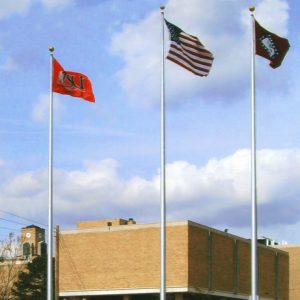 Arkansas State University
Arkansas State University 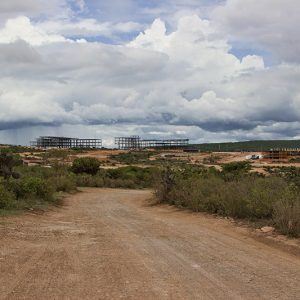 ASU Mexico
ASU Mexico 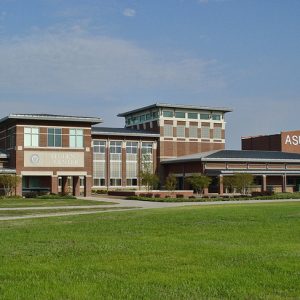 ASU-Beebe Student Center
ASU-Beebe Student Center  ASUMH First National Building
ASUMH First National Building 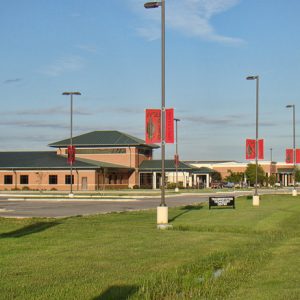 ASU-Newport
ASU-Newport 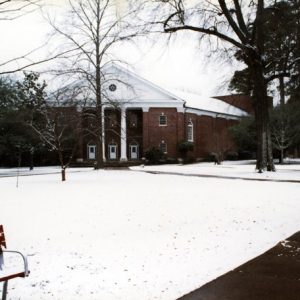 Henderson State University Arkansas Hall
Henderson State University Arkansas Hall 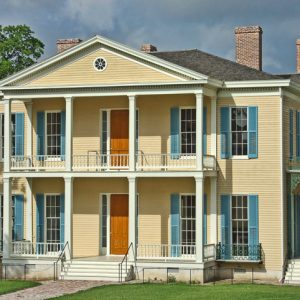 Lakeport Plantation
Lakeport Plantation 



Comments
No comments on this entry yet.